A new article by musicologist and music journalist Olga de Kort on musicpaintingLIVE published in Dutch music magazine Piano.Bulletin, April 2019
For the original article, please scroll down …
English translation of the article:
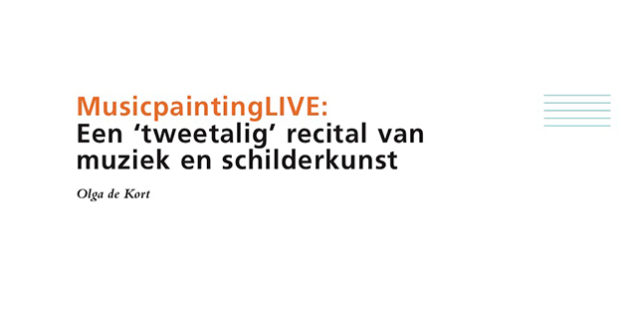
A new article by musicologist and music journalist Olga de Kort on musicpaintingLIVE published in Dutch music magazine Piano.Bulletin, April 2019
For the original article, please scroll down …
English translation of the article:
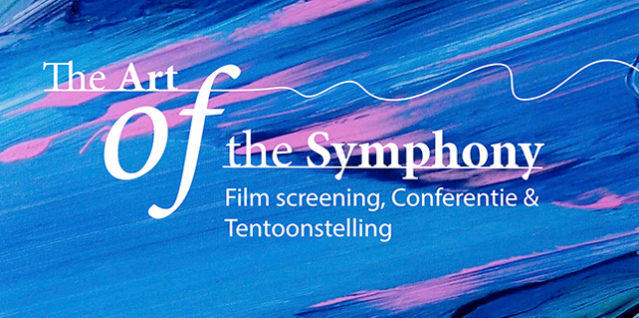
At DE BALIE in Amsterdam – THE ART OF THE SYMPHONY 2019
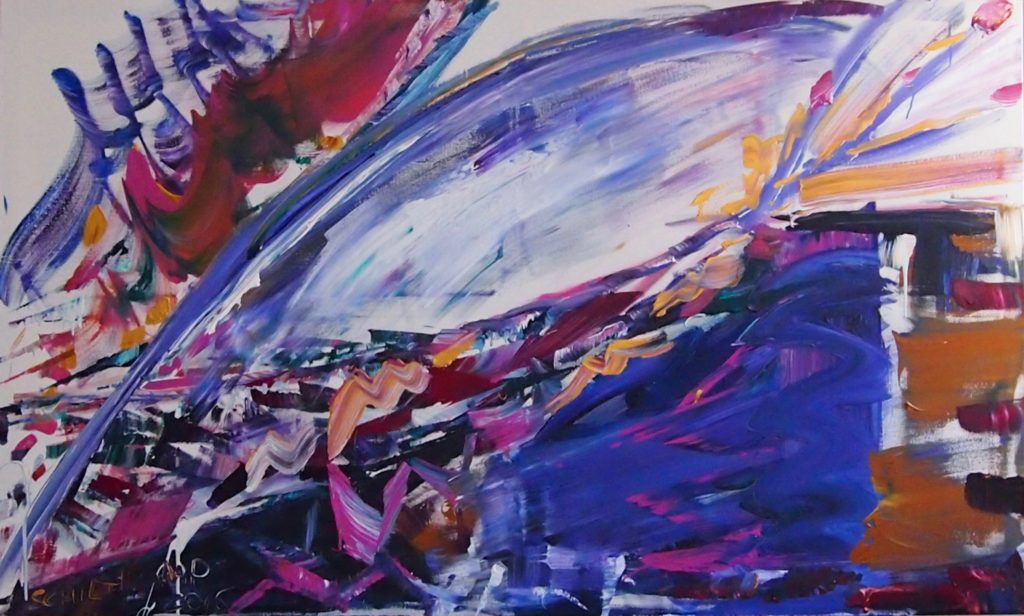
On 6 April at De Balie in Amsterdam the film screening, panel discussion & exhibition of the documentary film ‘The Art of the Symphony’ took place, with a full auditorium attending and interesting panel discussion.
Filmed in Prague, ‘The Art of the Symphony’ takes us from a studio where live paintings of Shostakovich symphonies are created, to archive footage of Prague during the Communist era and to present-day sites of former Communist monuments. Through these images, the main theme of the film – freedom from oppression – is related through a humanitarian, rather than political standpoint where; the individual, the human soul, strives to rise above this agony. Shostakovich’s Fourth Symphony is at the heart of these notions.
Produced by the DSCH Journal affiliate DSCH Films, written & directed by Alan Mercer.
Live-paintings by Maryleen Schiltkamp
Trailer documentary: https://vimeo.com/197099565
———
The documentary (50 minutes) was screened in the Filmzaal of De Balie, and followed by a panel discusssion and Q&A, after which an exhibition of the paintings created and filmed for ‘The Art of the Symphony’ could be visited in the upper-foyer at De Balie, Amsterdam.
Panelmembers:
Libor Štichauer – speaker at Jan Palach commemoration 2019
Olga de Kort – musicologist and music journalist
Albert van der Schoot – aesthetician, philosopher and musicologist
Alan Mercer – filmdirector DSCH Films
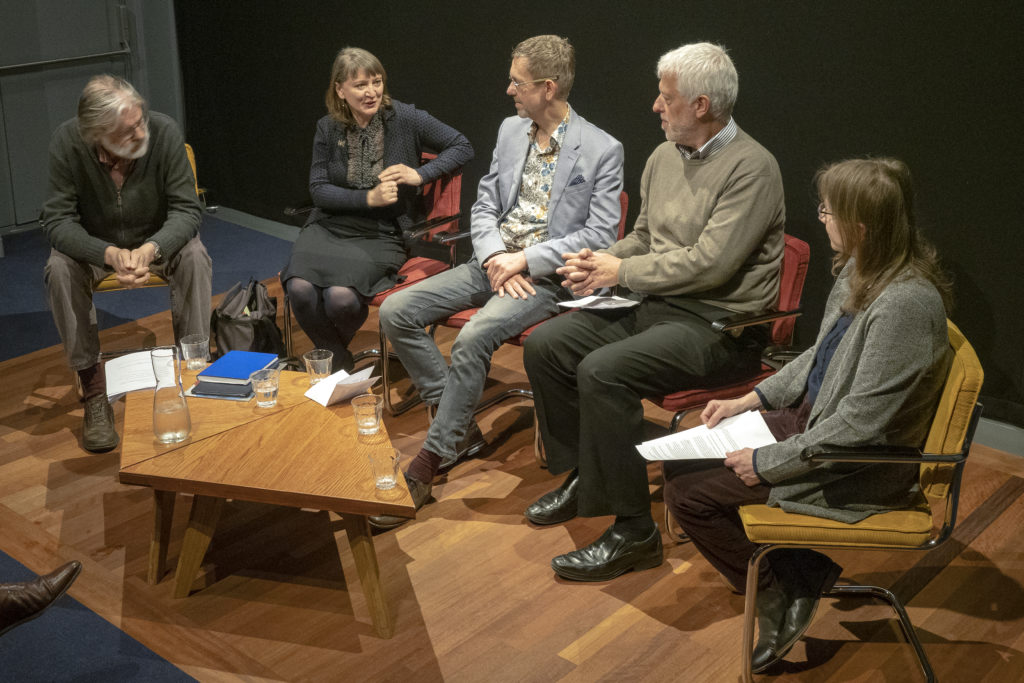
The subjects of the panelspeakers reflected the central theme of the documentary – freedom from oppression:

Panelmember Libor Stichauer, Czech scientist and speaker at Jan Palach commemoration 2019, Czech Center/ Goethe Institute Rotterdam. Very strong speech on the value of principles and commitment, with the memory of Jan Palach self-demolition on January 19, 1969 on Wenceslas square in Prague as a universal signal.

Panelmember Olga de Kort, musicologist, music journalist and critic, with expertise on the reception of Russian composers in the Netherlands. Olga enlightened us on Shostakovich and the Fourth Symphony.
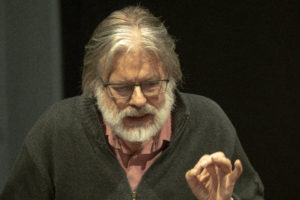
Albert van der Schoot, aesthetician, musicologist and philosopher. His subject was the Zhdanov Decree of 1946 and its effect on Shostakovich. Soviet Realism in music was questioned, as were grounds for ‘Formalism’; ‘Anti-Formalist Rayok’ was held as example of Shostakovich’s satirical reply. Integrity of the composer and moral dillemma’s were addressed in the panel discusssion
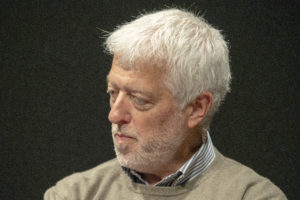
Alan Mercer, founder and chief editor of the DSCH Journal, a regulair publication on the life and work of Dmitri Shostakovich, and film director at DSCH Films, affiliated to the DSCH Journal.
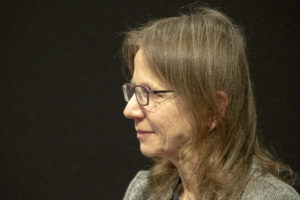
Maryleen Schiltkamp – visual artist, music painter; moderator of the panel
The exhibition of paintings was open for public at the upper-foyer of De Balie for one week, during 5 – 12 April
Many thanks to the employees of De Balie for their kind support and cooperation!
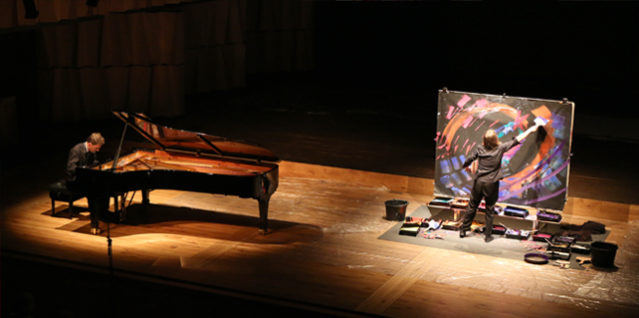
musicpaintingLIVE performance at Vidzemes Concert Hall, Cesis, Latvia – July 2017
with pianist Reinis Zariņš
musicpaintingLIVE ‘teaser clip’ with Reinis and Maryleen
“Bold fusion of two creative minds leaving lasting impact of beauty”, – Arturs Maskats, award winning Latvian composer, Cesis 2017

During Messiaen’s ‘Par Lui’ (Vingt Regards)
Videos Live performance at Vidzemes Concert Hall, Cesis, Latvia – July 2017:
LIVE concert video of Ravel’s ‘La Valse’
LIVE concert video of Bach Busoni Chaconne
LIVE concert video of Messiaen’s ‘Par Lui Tout A Été Fait’ (Vingt Regards)
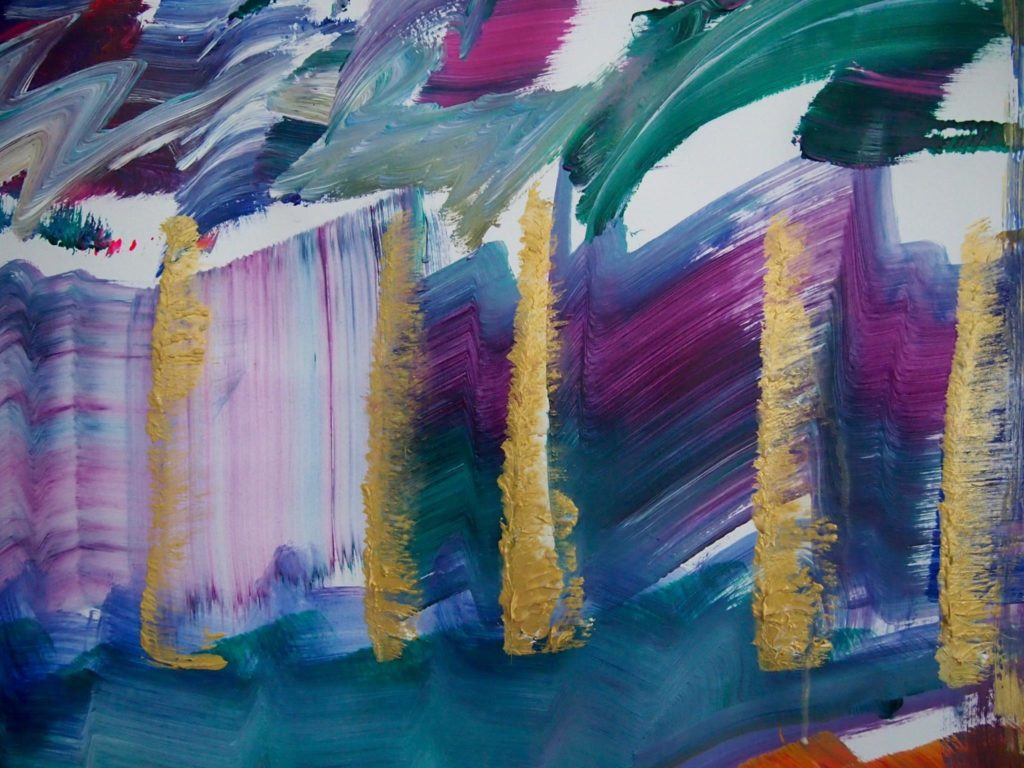
Musicpainting detail of Bach Busoni Chaconne
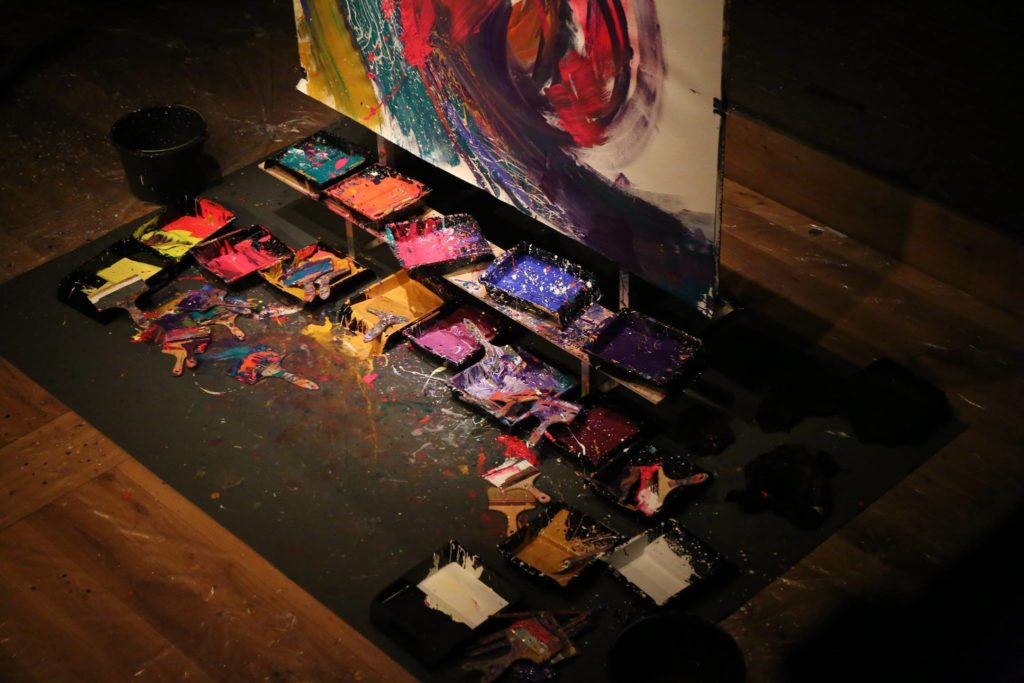
Paint trays during Ravel’s ‘La Valse’

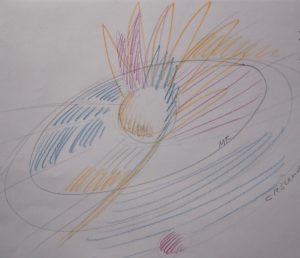


studying Messiaen’s ‘Par Lui …’ (Vingt Regards)
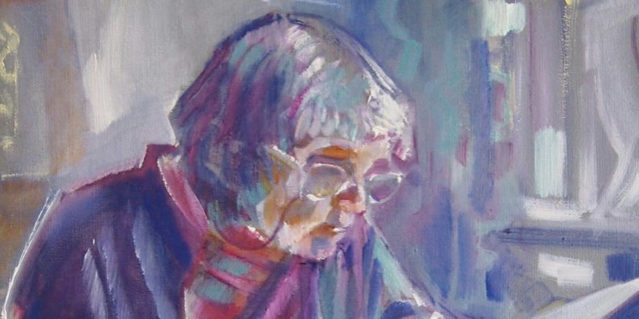

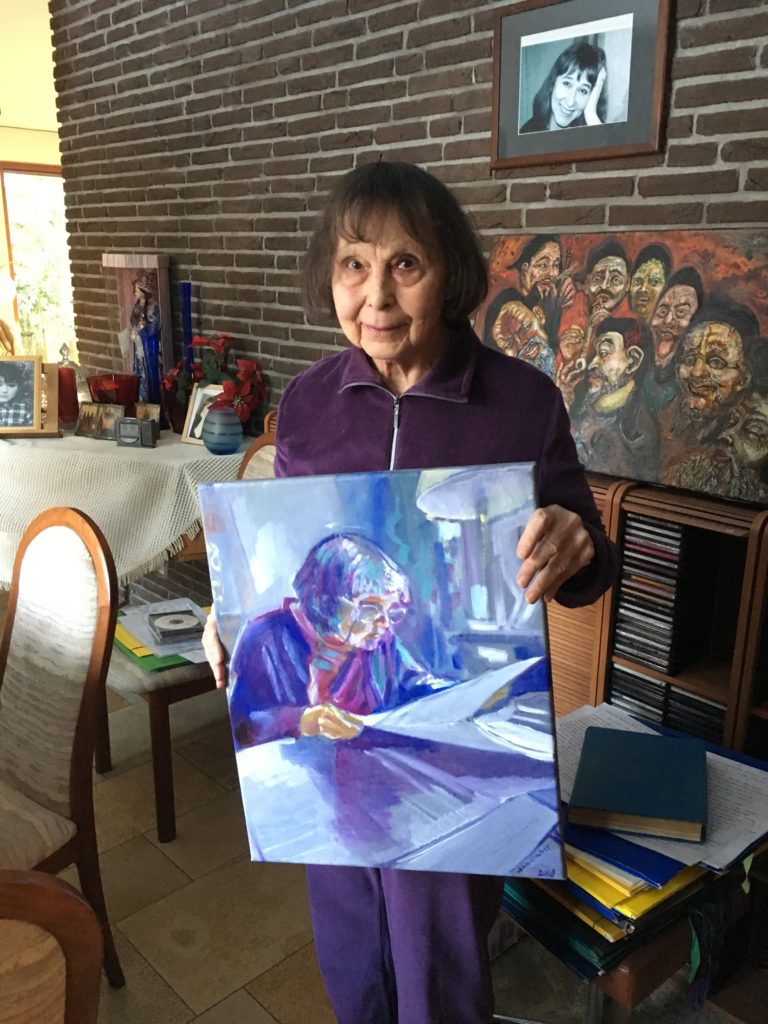

Hans-Ulrich Duffek, Mrs.Gubaidulina’s musicpublisher, at Korzo Theater, Den Haag, during the Gubaidulina festival, October 2018
 The original photo on which the portrait is based, was made by music-journalist Olga de Kort, for her interview with Sofia Gubaidulina
The original photo on which the portrait is based, was made by music-journalist Olga de Kort, for her interview with Sofia Gubaidulina
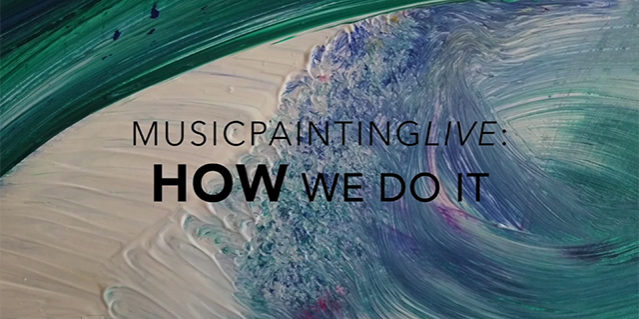
New video for musicpaintingLIVE: HOW we do it;
A backstage glimpse of the process, preparations and thinking behind musicpaintingLIVE;
with music painter Maryleen Schiltkamp and pianist Reinis Zarins.

Portrait of Gergiev (2004) in Dutch music magazine
‘De Nieuwe Muze’; Gergiev festival edition 2018



translated text:
” The portraits of Valery Gergiev are painted in 2004 and 2005 in Saint Petersburg. They are created from my fascination for the way of conducting and personal radiance of the Maestro. I did meet him in Russia, but somehow never got to ask him for a portrait. Instead, I based the portraits on photo’s of Gergiev of this time. I thought it interesting to portray his dedication to the music and how he gave the utmost of himself. Also to show how the inspiration transmitted by him is on the edge of something magic.”
href=”https://vimeo.com/241483645#” target=”_blank” rel=”no opener”>Short Impressions
Dutch music-magazine MUZE.Pianowereld included an article by Olga de Kort on my Shostakovich musicpaintings in the Gergiev Festival 2017 edition: “De kunst van live muziek schilderen – Kleuren en klanken van Maryleen Schiltkamps music paintings”
English translation of the article



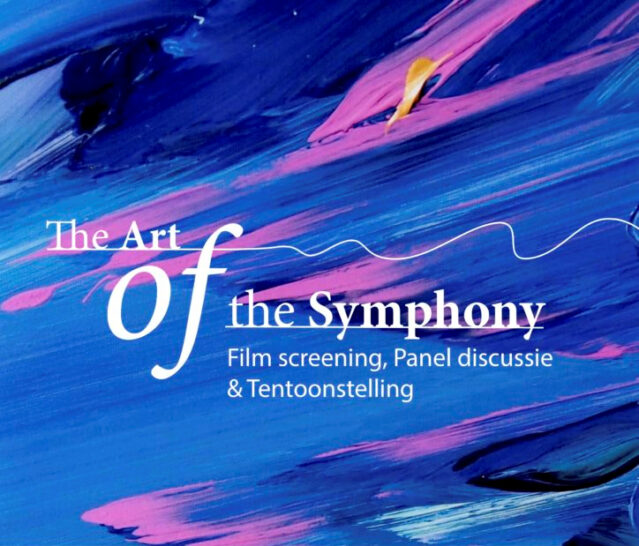
House of Europe – Den Haag
“The chosen topic for our discussion is the theme of “Integrity and Dissidence”
The future of humanity is at stake when we are not free to choose and to express our lives, not able to fundamentally disagree with regimes and act from our conscience.
In an totalitarian state, where oppressed citizens are crushed into following official doctrines, where one could be killed for voicing an opinion, the impact on the life of the individual is immeasurable. Masses of the population have a tendency to be brainwashed by state propaganda, heightened by terror and fear, they might be overwhelmed by the myth of a utopia, phenomena accentuated by their isolation from the rest of the world. Those who resist, if they survive, they will hide and mask what they think, they will face grave moral dilemmas and their strength of principle will be severely challenged.
How would we react under such enormous pressure, for fear of the safety of our lives or those of our loved ones? Would we protect and maintain our own principles? Or would we betray what we hold true, simply to survive? To reflect on integrity and dissidence is to identify with this individual moment of choice.
For instance, in former Czechoslovakia we think of dissident playwright and statesman Václav Havel and members of Charter 77, (Charta 77), like mathematician Václav Benda, and earlier the philosopher Jan Patočka. In Soviet-Russia we think of Alexander Solzhenitsyn and Andrej Sacharov. And even in 19th century Russia, poet and playwright Alexander Pushkin, with his revolutionary verses, was subjected to censorship and exile by the Tsar.
Can we speak of a “hidden dissidence” in music, art and literature, when opposition to a totalitarian regime is voiced through a coded language? If so, Shostakovich is a brilliant – albeit tragic – example of this. Interestingly, in several of Shostakovich’s works, verses of Pushkin provided a literary layer of depth to the composer through which he could make his own voice heard.
And we’ve asked our panel speaker Olga de Kort to enlighten us on this topic … ”
********************************************************************************
Introduction to the film:
“Welcome to ‘The Art of the Symphony’, today at the House of Europe!
Many thanks to Olga Sterenshis, director of the Blinibioscoop, for inviting us to celebrate the 10th anniversary of the cinema this afternoon, with a screening of our documentary film, followed by a panel discussion and exhibition of paintings that feature in the film.
After previous screenings in Paris and Prague in 2017, and at De Balie in Amsterdam earlier this year, we are delighted to shown our film in The Hague. The unique location of the House of Europe, offers to show our film and place our discussion in the perspective of the European Union. And this in combination with the Blinibioscoop, featuring films related to Russia and the other post-Soviet states.
I will briefly say something about the making of the film.
In 2016, I was approached by Alan Mercer, editor-in-chief and initiator of the ‘DSCH Journal’, the regular publication dedicated to the life and work of Dmitri Shostakovich. Alan noticed some of my artworks on music, through the media, especially those on Shostakovich’s symphonies had his interest. He invited me to take part in a documentary film, produced by DSCH Films, affiliated with the Journal, for which he himself would perform the camera work, script and editing.
In my studio in Prague there were oil paintings of the Fifth – and Tenth Symphony, and I was asked to prepare Shostakovich’s Fourth Symphony as a live music painting for the documentary.
I lived in Prague for 5 years; a city and a history I feel a lot of affinity with, friends who are dear to me, it is the heart of Europe where, in the autumn of 1989, a political revolution took place, with the Communist regime overthrown without military intervention, when Vaclav Havel came forward to define what would later be called the Velvet Revolution.
In this documentary, we aim to make a connection between symphonies of Shostakovich and the history of communism in the Czech Republic, through the creation of live paintings, filmed by Alan Mercer, in my studio in Prague. I would like to mention the immediacy of the visual content we are about to see.
One can experience music as an abstract phenomena, and relate to this world of sound; you recognize your own emotions and project feelings on it.
With Shostakovich’s music, I personally cannot see this separate from what we know or assume of how his life was, how he worked as a composer during the time of the Soviet State.
This is also the central theme of our film, “The Art of the Symphony”; the theme of individual freedom vs. totalitarian oppression, as experienced by Shostakovich, in his tragic struggle, and horrible co-existence with the Soviet regime.
We wish to connect with what it was like for the Czechs during Communism in former Czechoslovakia, but also the relevance with our current time; the totalitarian regimes that now exist – North Korea, China, thinking of demonstrations in Hong Kong, dictatorships in Turkey, Iraq, Hungary, and Vladimir Putin’s Russia- it reminds us of the times of the Warsaw Pact.
However political this context may be, the documentary focuses on the theme of freedom rather than politics; the suffering of the individual and the creative ability to rise above this abyss; in a way of catharsis that music can be as a shared experience for humanity – as we can hear in Shostakovich’s Fourth Symphony.
As an artist, I identify with Shostakovich’s music, his striving for freedom, and the most direct way for me, was by going to the heart of the musical movement in my paintings.
Then we will now look together at the documentary film ‘The Art of the Symphony’.
After the film, there will be a panel discussion, for which we invite you to stay in the auditorium.”
16 September 2019
Maryleen Schiltkamp
******************************************************************
Text brochure 2017
The Art of the Symphony
‘The Art of the Symphony’ is a new documentary film (2017) in which we follow the creative voyage of painter Maryleen Schiltkamp, who invites us to experience her work on depicting Shostakovich;s symphonies on the canvas. The film culminates in the creation of three paintings evoking passages from Shostakovich’s Fourth Symphony, created ‘live’ in her Prague studio. Produced by the DSCH Journal affiliate DSCH Films, written & directed by Alan Mercer.
One of the main themes evoked in the film is one of a common affinity with the symphonies of Shostakovich, works whose essence might be described as ‘individual freedom versus totalitarian oppression’. However, notwithstanding a clear political context, our art and film project evokes the vital subject of humanity in the creative process. We strive to represent – in whichever way music can relate to the human soul – the suffering of the individual and the power of artistic creation to connect and rise above this agony. Shostakovich’s Fourth Symphony is at the heart of these notions.
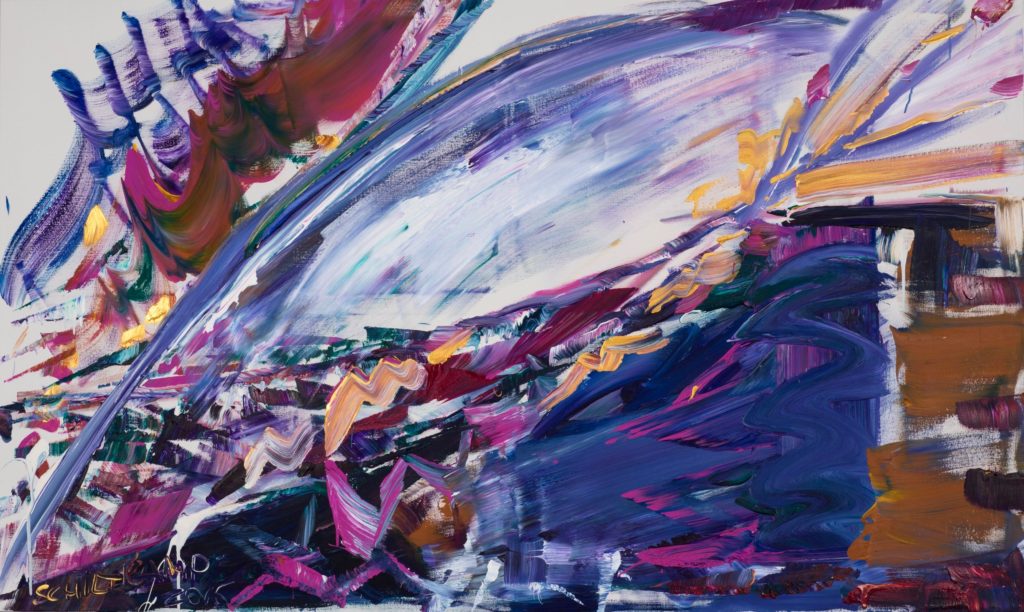 Shostakovich Symphony No.4, Allegro/ Coda – live musicpainting for the documentary (2016)
Shostakovich Symphony No.4, Allegro/ Coda – live musicpainting for the documentary (2016)
In 1936, while Dmitri Shostakovich was composing his Symphony No.4 in C minor, Op.43, Pravda – under direct orders of Joseph Stalin – published an editorial “Muddle Instead of Music”, that denounced the composer and targeted his opera Lady Macbeth of Mtsensk. Despite this attack, Shostakovich completed the symphony and planned its premiere in Leningrad, but at some point during rehearsals he withdrew the work. It was premiered only 25 years later, in 1961.
The Symphony No.4 ranks as one of his most important and most personal works. That he believed strongly in the work we know from his own remarks and that he finally had it performed without changing a single note.
Filmed in Prague, the theme of freedom from oppression, just as we encounter it in Shostakovich’s music, is in ‘The Art of the Symphony’ related to the history of the Czech people. Former Communist sites and archive footage in the film are combined with passages that allow the viewer to witness the various artistic processes in the studio, heightening the sense of relevance even today, through key moments of the works’ creation.
On Music Painting:
Music painting is a new performance art, combining ‘live’ or recorded music with artistic creations made directly during a concert, or recital. This visual creation follows the musical movement and the colour of sound at the same time, producing a unique experience.
As part of the artist’s preparation, the musical score is studied in detail, and a ‘timeline’ of the music is created. From this timeline a visual score is created allowing the artist to rehearse simultaneously with the music, and to decide finally when to paint what – and where – on the final canvas, one might say ‘a choreography for the movements of the brush’.
Significant moments in the dynamics of the music are highlighted: contrasts and syncopations, the work’s main themes and inversions, the depth of the character and the overall nature of the piece. For the live performance, these preparations and studies are of course helpful but do not set the final work in stone. All that happens during performance itself is part of a moment, an instant, and as much as the artist aims to carry out her plan and to anticipate the gestures and movement, the final work always results from an experience based on musical and physical interactions, in what is an open form of art with an element of improvisation.
********************************************************************************
The Art of the Symphony – documentary film (2017)
Produced by the DSCH Journal affiliate DSCH Films, written & directed by Alan Mercer;
‘Live’ paintings of Shostakovich’ Symphony No.4 by Maryleen Schiltkamp
Synopsis:
Filmed in Prague, ‘The Art of the Symphony’ alternates between the creation on canvas of a major Shostakovich work, and evocative footage of Prague, both during the Communist era and the present-day reminders of those complex times. Within these images, the main theme of the film – freedom from oppression – is related through a humanitarian, rather than political standpoint, where the individual, the human soul, strives to rise above earthly conflict. Shostakovich’s Fourth Symphony is at the heart of these notions.